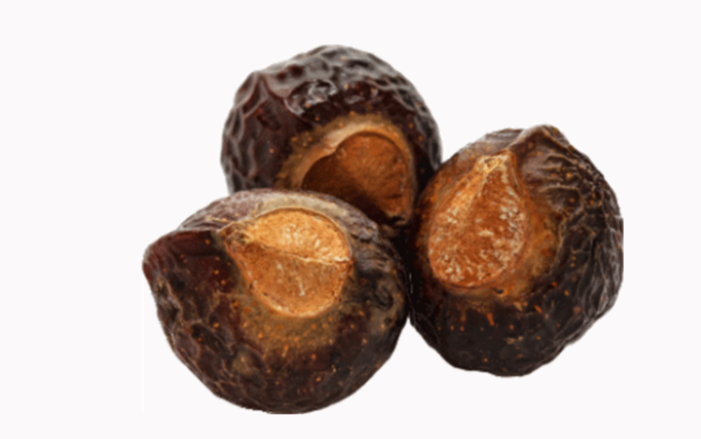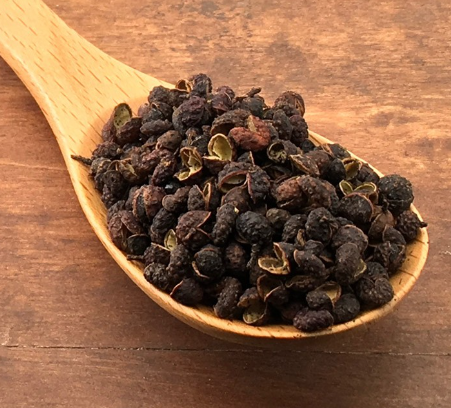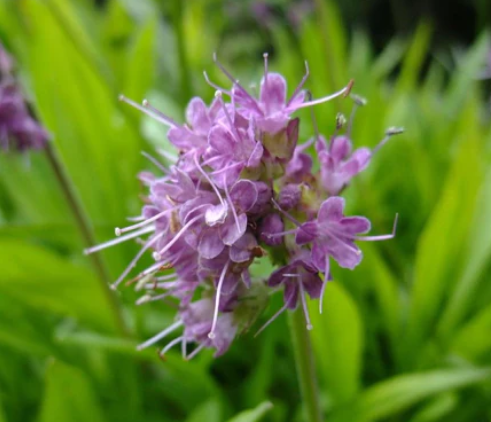Medical herbs in Nepal
Nepal is ranked ninth in Asia for floral wealth. Because of its varied climate, Nepal is home to some of the rarest and most valuable herbs and medicinal plants as a result there are approximately 7,000 species of higher-value plants in the country, along with 118 different ecosystems and 35 different types of forests. Another estimate places the number of flowering plant species in Nepal at 5,865, of which 690 are believed to have medicinal applications. There are numerous applications for both cultivated and wild medicinal plants, including homeopathy, ayurveda, and other traditional therapies with Medical herbs in Nepal . In a similar vein, flavors and fragrances are created using essential oils that are extracted from aromatic plants. Herbs such as zedoary, sugandhawal, cinnamon, chamomile, citronella, juniper berries, and lemongrass are exported to Europe, the United States, East Asia, and India and are used in the production of essential oils.
List of Medical herbs in Nepal
Yarshaghumba:

Yarsha Gumba, also known as Yarsagumba or Yarchagumba, is a unique natural hybrid of a fungus (Ophiocordyceps sinensis) and the larvae of a particular type of moth (Hepialus armoricanus). This rare and valuable natural product is found in the high-altitude regions of the Himalayas, including Nepal.In Nepal, Yarsha Gumba is primarily found in the mountainous areas, especially in the higher altitudes of the Himalayan range such as Dolpa, Mustang, Manang, Rukum, and Humla, among others.
The fungus that grows inside the ghost larvae contains cordycepin, and studies show that the compound increases ATP production in the body. It means Yarshagumba helps improve physical
endurance and reduce Fatigue due to the compound’s benefit in the body. Moreover, medical study has shows that it is beneficial for various aspects such as:
Benefit
Antioxidant Properties: Yarsha Gumba contains bioactive compounds known as polysaccharides, nucleosides, and other antioxidants. Antioxidants help combat oxidative stress by neutralizing free radicals in the body, potentially supporting the immune system.
Immunomodulatory Effects: Some research suggests that components found in Yarsagumba may modulate or regulate the immune system’s response. This modulation might enhance immune function, helping the body fight infections and illnesses.
Anti-inflammatory Effects: Chronic inflammation can weaken the immune system. Yarsha Gumba has been studied for potential anti-inflammatory properties, which, if true, could indirectly support immune health by reducing chronic inflammation.
Enhanced Energy and Vitality: Traditionally, Yarsha Gumba has been used to increase energy levels and vitality. By improving overall well-being, it might indirectly contribute to supporting the immune system
Shilajit

Shilajit is a natural substance composed of humus and organic plant material that has been compressed by layers of rock which can be found himalayan area. So it contian more than 84 minerals, including silver, copper, zinc and iron.It will “flow” out from between the cracks in the layers of rock during the summer when the temperature of the mountains gets warm enough and the Shilajit becomes less viscous. Shilajit powder may be taken with milk.
Benefit:
- Study in animals shows that taking shilajit increases the hemoglobin level so it can be used as a supplement for those who have iron deficiency anemia.
- Shilajit is also a safe supplement for male infertility by increasing male fertility by boosting key hormones and sperm count.More than 12 percent had an increase in sperm motility. Sperm motility refers to the ability of the sperm in a sample to move adequately, an important part of fertility.
Saffron:

In Nepal, high-altitude regions—particularly those in districts like Jumla, Mustang, and Manang—are the primary growing areas for saffron. The climate in these regions is perfect for growing saffron because of the lower temperatures and well-drained soil. These regions are ideal for saffron cultivation, and flower fields and cultivation sites are frequently found on terraced fields or slopes. Nepalese saffron is becoming more and more well-known on the international market due to its exceptional quality.
Benefit:
- There is a remarkable range of plant compounds found in saffron. These function as molecules known as antioxidants, which shield your cells from oxidative stress and free radical damage.
- Saffron seems to help with PMS symptoms like headaches, cravings, pain, and anxiety, and it can be consumed or smelt.
- Studies on animals and in test tubes suggest that the antioxidant qualities of saffron may reduce blood cholesterol and avoid clogged arteries and blood vessels.
Reetha

Soapnuts, also known as reetha or aritha, are widely distributed throughout Nepal, especially in the country’s hilly and mountainous regions. They are often picked from trees in areas like the Terai region, which includes the southern part of Nepal, and the foothills of the Himalayas. High-elevation areas of the nation, including Jumla, Kanchanpur, Kailali, and others, are well-known for producing soap nuts or for the development of these trees. In these areas, soapnuts are harvested for a number of purposes, including natural cleaning solutions, traditional medicine, and personal hygiene.
- The dried fruit of Reetha is used as a key component in various shampoos, cleansing agents and hair care products, owing to its potent ant-microbial and antiseptic properties.
- The reetha powder obtained from a reliable source might help in various skin infections like psoriasis, eczema, and pimples as it has Tridosha (Pitta, Vatta and Kapha) properties
- Reetha contains essential compounds such as saponins. These compounds may possess anticancer and antitumor activities. Various laboratory studies have found that Reetha effectively stopped the growth of cancer cells and tumor formation in cancer cell lines
Shikakai
Shikakai which means “fruit for hair” is a part of the traditional Ayurvedic medicine.The pods of the shikakai plant contain saponins, which are natural surfactants that create a lather when mixed with water. This lathering property makes shikakai an excellent natural alternative to commercial shampoos that often contain harsh chemicals.It is rich in vitamins like vitamin C, A, D, and K, along with antioxidants. These nutrients help nourish the hair follicles, promoting healthier and stronger hair growth while preventing breakage and split ends.

Benefits:
- Shikakai increases hair growth, lessens breakage and loss of hair, and gives hair more elasticity and shine.
- Particularly in the winter, shikakai’s natural ingredients and essential nutrients work wonders to improve the texture of your hair.
- Shikakai functions as an organic disinfectant that doesn’t strip away essential oils, and it works wonders on dry scalps.
- When shikakai is included in a regular diet, it can enhance appetite.
Chiraito

In Nepal, Chiraito is valued for its medical herbs in Nepal and has been an integral part of traditional medicine practices for generations. It’s harvested from the wild or cultivated in certain areas due to its significance in traditional remedies.
The herb has been traditionally used for its medicinal properties, primarily as a bitter tonic and for its potential therapeutic benefits, including:
Digestive Health: Chiraito is believed to stimulate appetite and aid in digestion due to its bitter properties. It has been used to treat digestive disorders like indigestion and loss of appetite.
Fever and Infections: In traditional medicine, chiraito has been used as a febrifuge, meaning it’s believed to help reduce fever. It’s also thought to possess antimicrobial properties, which might aid in combating certain infections.
Liver Health: Some traditional practices suggest chiraito’s use in supporting liver health and treating liver disorders.
Antioxidant and Anti-inflammatory Effects: Chiraito contains compounds that have potential antioxidant and anti-inflammatory properties, which could contribute to its traditional use in promoting overall health and well-being.
You May Also Like
1 ) Top Organic Dals used in Nepali Kitchen.
Asparagus

Asparagus is a fantastic addition to meals, offering a range of nutritional benefits. Its versatility makes it easy to incorporate into various dishes, providing essential vitamins like A, C, E, and K, along with minerals like folate and potassium. Plus, its low calorie count makes it a great choice for those aiming to maintain a healthy diet. Whether you have time to cook it into a meal or simply enjoy it raw, asparagus is a wonderful and nutritious option.
Benefits
- As a good source of fiber, asparagus promotes regularity and digestive health and may help reduce your risk of heart disease, high blood pressure and diabetes.
- Asparagus is high in folate (vitamin B9), an important nutrient that helps reduce the risk of neural tube defects during pregnancy.
- It’s often recommended to support lactation in nursing mothers due to its purported galactagogue properties, which are substances that enhance milk production.
Timut Pepper

Timut pepper, also known as Nepali pepper or Nepalese pepper best Medical herbs in Nepal , is a unique spice that comes from the Zanthoxylum armatum plant, native to the Himalayan region, particularly Nepal. It belongs to the family Rutaceae and is not a true pepper but rather a type of peppercorn.The Timut pepper has a distinct citrusy and floral flavor profile with a strong, tingling, and numbing sensation on the tongue.
Apart from its culinary uses, Timut pepper is also known for its potential medicinal properties. In traditional medicine, it has been used for its digestive properties and as a remedy for toothaches and sore throats.
Benefits:
- Because Timut pepper contains a lot of iron, it oxygenates red blood cells and improves circulation. Those with low iron levels will particularly benefit from this.
- Timut pepper has long been used as a pain reliever due to its numbing properties; it works especially well for momentary toothache relief.
- Timut pepper works by combating oxidative stress, and it treats inflammation as a result. Inflammation is a product of oxidative stress.
Jatamansi / Spikenard

Are you seeking a natural remedy that not only promotes relaxation but also nurtures your overall well-being? Look no further than Jatamansi, an ancient herb celebrated for its myriad of benefits. Let’s delve into the enchanting world of Jatamansi. The herb jatamansi, sometimes referred to as spikenard or Nardostachys jatamansi, is indigenous to the Himalayas, specifically to China, India, and Nepal. It is a small, pink, bell-shaped flowering perennial herbaceous plant with long, slender rhizomes.Its root is primarily used for its potential benefits on the nervous system and mental health.
Benefits:
- The mild sedative properties of jatamansi might hold the key. It induces a mild state of relaxation in your mind, which facilitates a more profound and peaceful sleep.
- According to studies, jatamansi may have a beneficial effect on cognitive function, which may improve memory and focus.
- Jatamansi isn’t limited to inner peace; it extends its benefits to your outer glow. Embrace its use in skincare and haircare routines for healthier skin and luscious locks.
Neem (Azadirachta Indica A. Juss.)

Nepal cherishes neem for its medicinal value deeply rooted in Ayurveda and traditional healing practices. The neem tree, which is found throughout the majority of Nepal’s forested areas and in other nations with comparable climates, can withstand temperatures ranging from 45 degrees Celsius, which is hot and tropical, to slightly above freezing, which is semi-temperate at higher elevations. used for more than 2,000 years in Ayurvedic medicine in Nepal.It’s revered for its antibacterial, antifungal, and anti-inflammatory properties, serving as a remedy for various health issues.
Benefits:
- Neem has an anti-inflammatory property which helps reduce acne Azadirachta Indica also helps reduce skin blemishes.
- Consumption of neem leaves or powder stimulates kidneys and liver increasing the metabolism and eliminating the toxins out of the body. Externally, neem scrubs or paste can be used to remove germs, bacteria, dirt, etc from your skin preventing rashes and skin diseases.
- Application of neem oil or extract on the affected area can help reduce pain and discomfort. Hence it is widely used for treating arthritis.
By Biggsdesign

